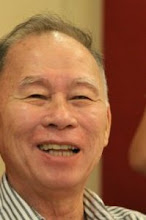President Benigno “Noynoy” Aquino, in his inaugural speech
delivered last 30 June 2010, pointed out something close to everyone’s heart —
the siren, better known as the “wangwang”. For starters, it was an effective
and a precedent-setting move –.
“Kayo ba ay minsan ring nalimutan
ng pamahalaang inyong iniluklok sa puwesto? Ako rin. Kayo ba ay nagtiis na sa
trapiko para lamang masingitan ng isang naghahari-hariang de-wangwang sa
kalsada? Ako rin. Kayo ba ay sawang-sawa na sa pamahalaang sa halip na magsilbi
sa taumbayan ay kailangan pa nila itong pagpasensiyahan at tiisin? Ako rin. x x
x Ngayon, sa araw na ito – dito magwawakas ang pamumunong manhid sa mga daing
ng taumbayan. x x x “
But alas – towards the tailend of his 6-year term, Noynoy is
again facing a challenge in the form of an overwhelming MetroManila-wide traffic
mess that banning “wangwang” can no longer ease. More drastic alternatives and
solutions are called for.
In today’s MOTORING TODAY December 23, 2015, Ray Butch
Gamboa stated:
“Subic never fails to amuse me whenever I go there. And I
was there for two straight weekends. The first was upon the invitation of
Toyota Motor Philippines for the culminating leg of the Vios Cup. While the
second week was for the 2nd and final leg of the only motor sports
competition that auto companies openly compete against each other, the STV Auto
Rally Corporate Challenge. And all the time I never failed to see drivers make
a complete stop at every intersection to give way to those who came ahead. And
not one dared to tailgate the car ahead but similarly made a full stop (like
the way it should be done while crossing a stop thru intersection) and
patiently waited for their turn. And this scene was repeated even at
intersections where there were no traffic enforcers in sight. It looked like
second nature to these guys—like obeying traffic rules and regulations were a
way of life—and it is.
With all due respect to those running other parts of the
country, most people I know, myself included, only see this in Subic. And most
people who have seen this, myself included can only hope this can be replicated
in Metro Manila or at the very least in EDSA—as a popular TV series is
similarly titled, “Wish ko lang.”
We just had the head of the PNP-HPG, Police Chief
Superintendent Arnold Gunnacao for an interview in the Motoring Forum segment
of our TV show Motoring Today and he mentioned that what’s needed in EDSA to
continue whatever small gains they have achieved in managing traffic in the
metro’s main thoroughfare is more HPG and MMDA personnel. And I would agree
with the gentleman except for a qualifier—more
personnel who are dedicated, straight and firm who would implement the law
without fear and favor.
This was how it all started in Subic. No one was above the
law—no senator, no congressman, no military, no police, no media. Make that
happen, HPG Chief Gunnacao, and you can be as popular or unpopular like Senator
Dick Gordon, who started it all in Subic. But it still works and people still
give credit to good old Dick. Then perhaps EDSA can be another Subic. Or is it,
“Wish ko lang?”
I hope not. Go for it, sir! It can be a worthy legacy”.
It seems that for many for us vehicular congestion or
traffic gridlock is the most palpable problem among Pinoys. How we deal with
heavy traffic and manage it triggers awareness of a series of other problems.
Former MMDA boss Francis Tolentino missed to take advantage
of this golden opportunity to expand his political base. And instill the seed
of discipline among the travelling masa. Perhaps, the contending presidentiables should take a cue from
this.
Mar Roxas’ plan of relocating the international airport from
Pasay to Clark serviced by a reliable rail system is a logical ground-breaking start.
But it’s a long way off from expecting discipline among our confused voting
masa. A disciplined electorate will pave a straight way for Mar to the Palace.



